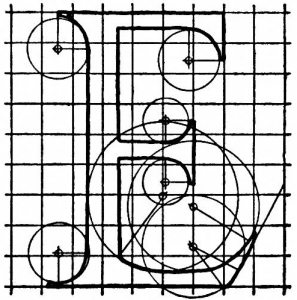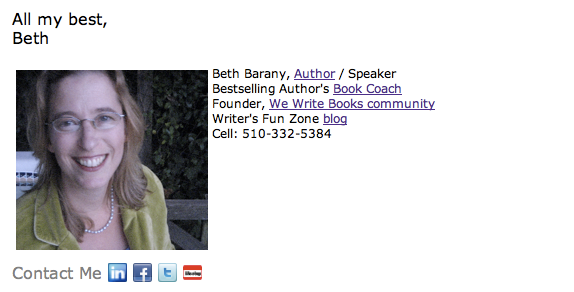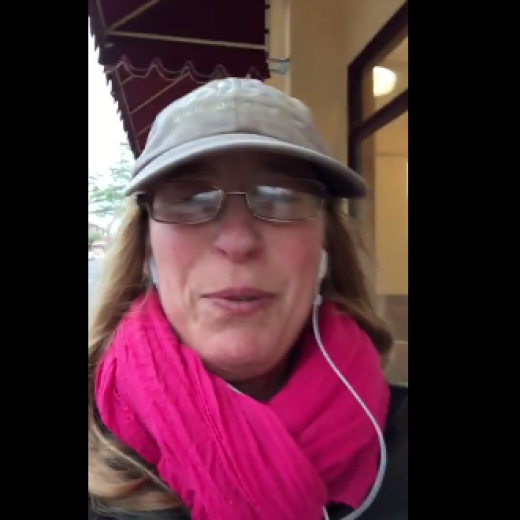Artist Entrepreneur: E for Email— The Artist’s Alphabet Guide to Writing About Your Art
 by Aletta de Wal
by Aletta de Wal
Welcome to Artist Entrepreneur Fridays, where we talk about the fun, wild and scary ride of succeeding as an artist entrepreneur of all stripes and types and mediums.
Welcome back guest columnist, Aletta de Wal. She specializes in helping visual artists succeed in their fine art careers. She’s posting regularly on “The Artist’s Alphabet Guide to Writing About Your Art” and other success tips for fine artists around writing. This week it’s about email etiquette — useful tools for all of us. Enjoy!
^*^
Despite how long email has been around, or maybe because of that, I often see these five fundamental mistakes in the emails I get from visual artists:
- No salutation. The medium does not always do justice to the message. Unless you and the other correspondent have a long-standing relationship or are sending frequent emails, include a Dear <name> or Hello <name> as a courtesy.
- Including all recipient addresses in the CC line. This makes it easy for spammers and spoofers to harvest these addresses. Include addresses for multiple recipients in the BCC line or use a delivery service like Constant Contact, Aweber or Mail Chimp.
- Cryptic short responses. If you reply without a clear subject line or a thread from previous conversations, the receiver has to remember or dig through past emails to find out what you talked about. Make it easy for your reader to follow the conversation.
- Venting. There’s always a chance that you misunderstood the intention of the sender. If you have a problem with someone or something they said, the best way to handle it is a tactful email in return or, even better, a telephone call.
- No email signature block. This is a particular rant of mine, especially when the email address does not include the sender’s name. Make it easy for people to contact you. Beth has a great model for you:

Remember you are writing a letter but sending it electronically.
Just because email is common, quick and easy, that is no excuse to be sloppy.
So, here are some best practices for your email communication:
Before you write:
- When you initiate the email, decide on your purpose and set a context for your message.
- When you respond to a message, read the email carefully to make sure you know what it says or asks of you.
- If there is more than one issue to address, make sure to clearly identify each one.
- When something upsets or surprises you, wait 24 hours before you respond. You may have misunderstood or there may be a better way to deal with the issue than email.
- When your message is time-sensitive, make sure that you know the email habits of your recipient. We all have different habits and frequency of checking and responding to email. If you don’t hear back when you want to, it’s up to you to follow-up.
When you write:
- Think about what the topic from your recipient’s point of view – W.I.F.M. (What’s in it for me?)
- Package your message with a clear subject line, obvious sender, and make your subject line clear and appealing.
- Get attention in your opening sentences. Keep it by building interest in the middle, and generate enthusiasm to continue the dialogue with a strong close.
- Preserve the thread of the conversation. If you don’t want to include a string of emails, at least include the one to which you are responding, or excerpt sections from previous emails so it’s clear what you are responding to.
- Be careful with humor and icons. You have only your words, not the corresponding auditory and visual parts of the entire message, which would let someone know you are intending to be entertaining. Avoid sarcasm. It kills connection. People do appreciate well-written stories and anecdotes that are relevant and compelling.
- Reference attachments in the body of your email. Some ISPs (Internet Service Providers) delete attachments, especially large ones, if they suspect there might be a virus included. By mentioning it in the body of your email, the recipient can let you know if it doesn’t arrive.
Before you hit send:
Check your email carefully and check for completeness, tone, spelling and grammar. Once you’ve hit send is often when you slap your forehead because you know there was something not quite right. Now it’s too late to make a good first impression. Of course you can apologize, but it’s better to take the time to get it right the first time. (One of my personal favorites is forgetting the attachment, so I check for those very carefully.)
Informality, ease, speed and good writing don’t have to be mutually exclusive. Email is the electronic sister to surface mail and visual cousin to voice mail. Be as careful with email as you would with a handwritten letter to your grandmother or a conversation with a valued friend.
Next time: F for Follow-Up and Follow-Through.
 Aletta de Wal, Artist Career Training
Aletta de Wal, Artist Career Training
Aletta de Wal inspires fine artists to make a better living making art in any economy.
Aletta works with part-time, emerging and full-time visual artists who are serious about a career in fine arts. Aletta makes make art marketing easier and the business of art simpler.
More information at: http://www.artistcareertraining.com/artmatters-newsletter/







